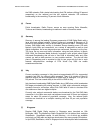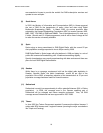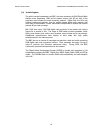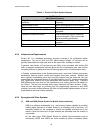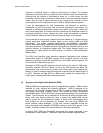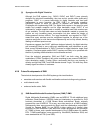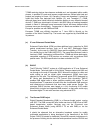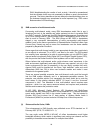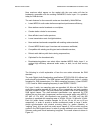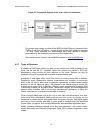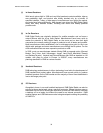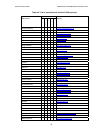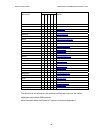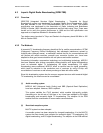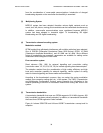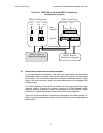DIGITAL RADIO GUIDE TERRESTRIAL TRANSMISSION SYSTEMS - DAB
30
New receivers which appear on the market with the new codec will also be
backwards compatible with the existing DAB-MPEG Audio Layer II in operation
today for DAB services.
The main features for the new audio codec are described by WorldDAB as:
• Latest MPEG-4 audio codec delivers exceptional performance efficiency;
• More stations can be broadcast on a multiplex;
• Greater station choice for consumers;
• More efficient use of radio spectrum;
• Lower transmission costs for digital stations;
• New receivers backwards compatible with existing codec standard;
• Current MPEG Audio Layer II services and consumers unaffected;
• Compatible with existing scrolling text and multimedia services;
• Robust audio delivery with fast re-tuning response time;
• Optimised for live broadcast radio;
• Broadcasters/regulators can select either standard MPEG Audio Layer II, or
optional high efficiency advanced audio codec, or both, to suit their country
needs.
The following is a brief explanation of how the new codec enhances the DAB
standard.
The main Digital Audio Broadcasting specification (ETSI EN 300 401) defines how
audio should be broadcast. “The DAB system uses MPEG Audio Layer II, suitably
formatted for DAB transmissions. For 48kHz sampling frequency it uses ISO/IEC
11172-3 and for 24kHz sampling frequency it uses ISO/IEC 13818-3.”
For Layer II audio, two sampling rates are permitted, 48 kHz and 24 kHz. Each
audio frame contains samples for 24 ms or 48 ms respectively and each contains
the same number of bytes. The audio frames are carried in one or two respectively
DAB logical frames. The draft technical specification now approved by ETSI
defines the way that audio (programme) services are carried when using MPEG 4
HE AAC v2. For AAC, two transforms are specified. For DAB, only the 960
transform is permitted with sampling rates of 48 kHz, 32 kHz, 24 kHz and 16 kHz.
Each AU (audio frame) contains samples for 20 ms, 30 ms, 40 ms or 60 ms
respectively. In order to provide a similar architectural model to Layer II audio,
simple synchronisation and minimal re-tuning delay (i.e. station selection, or
“zapping” time), AUs are built into audio super frames of 120 ms which are then
carried in five DAB logical frames. In order to provide additional error control, Reed
Solomon coding and virtual interleaving is applied. The overall scheme is shown in
Figure 4.3.



